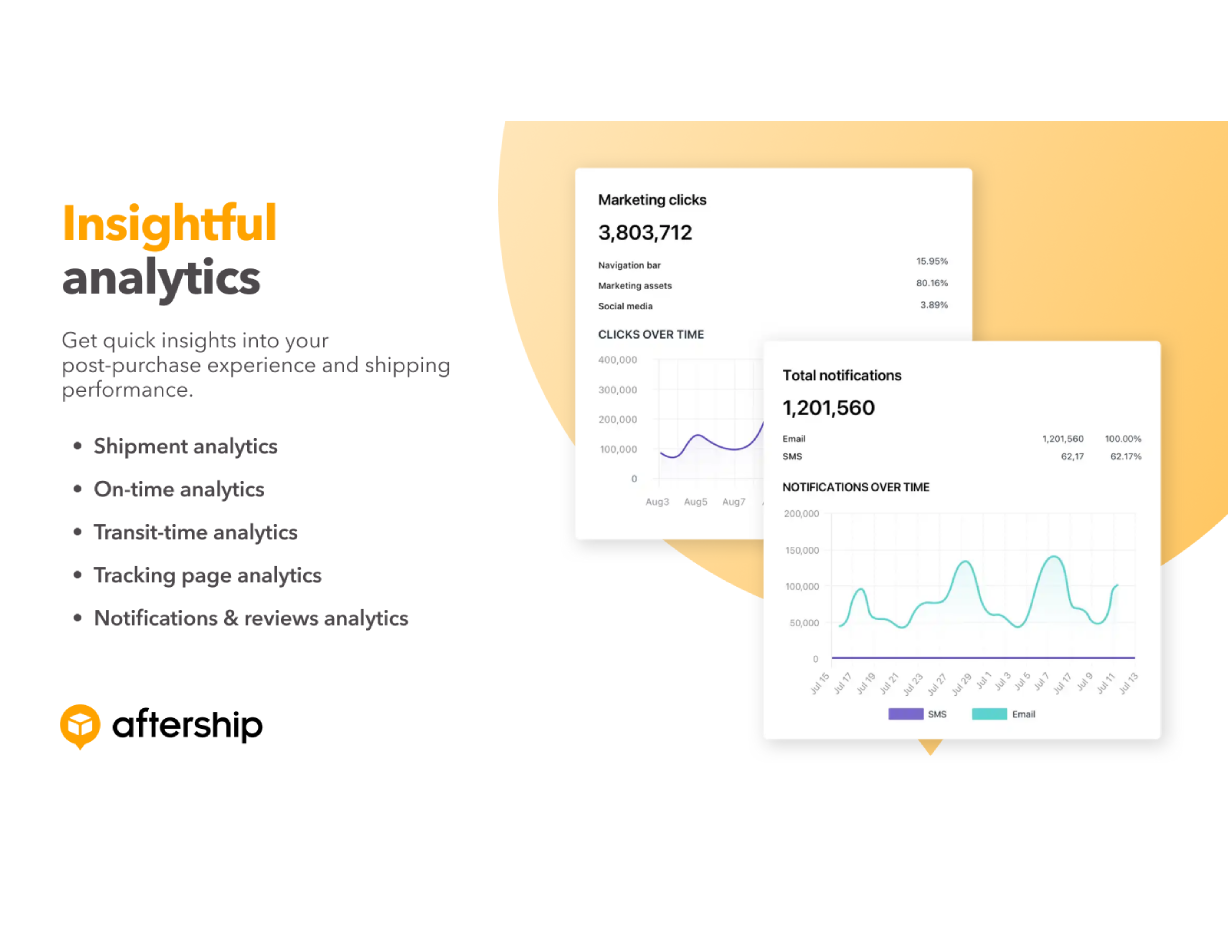
AfterShip Tracking & Analytics: Complete Buyer's Guide
AI-powered shipping and logistics platform
AfterShip Tracking & Analytics is an AI-powered shipping and logistics platform that transforms post-purchase customer experiences through automated tracking, predictive analytics, and comprehensive carrier management for ecommerce businesses of all sizes.
Market Position & Maturity
Market Standing
AfterShip operates as an established player in the shipping intelligence market, competing directly with platforms like ShipStation, Shippo, and 3PL services like ShipBob [49][51].
Company Maturity
Business maturity indicators include documented customer success across diverse segments, from 8-figure ecommerce businesses [57] to smaller operations like Unitymob [56].
Industry Recognition
Industry recognition includes positive customer feedback praising 24/7 customer support [57] and responsive teams [56].
Longevity Assessment
Technical infrastructure stability evidenced by 99.99%+ API uptime [41][46] and successful Google Cloud migration that reduced deployment times from 1 hour to 2 minutes [46].
Proof of Capabilities
Customer Evidence
Juniper Creates demonstrates AfterShip's enterprise-scale capabilities, using the platform to analyze 500,000+ packages annually [53].
Quantified Outcomes
Fellow achieved 52% reduction in average return resolution time from 14.46 days to 7.52 days using AfterShip Returns automation [55].
Market Validation
Market validation comes through measurable customer outcomes including Fellow's 52% reduction in return resolution time [55], Internet Up's 10% net revenue increase [54], and Unitymob's 50% GMV increase for some stores [56].
Reference Customers
Enterprise customers include Juniper Creates analyzing 500,000+ packages annually [53].
AI Technology
AfterShip's Logistics AI leverages over 4.4 billion shipment data points to power sophisticated deep learning models that deliver hour-level estimated delivery dates (EDD) using multivariate analysis [41][42][44][52].
Architecture
Technical architecture emphasizes cloud-native scalability, with AfterShip's Google Cloud migration reportedly reducing deployment times from 1 hour to 2 minutes [46].
Primary Competitors
Primary competitors include shipping platforms like ShipStation and Shippo, plus 3PL fulfillment services like ShipBob [49][51].
Competitive Advantages
Competitive advantages center on carrier coverage breadth (1,212+ carriers) [41] and AI-powered delivery predictions using 4.4 billion shipment data points [41][42][44].
Market Positioning
Market positioning targets businesses requiring extensive carrier support and AI-powered predictions, competing directly with platforms offering similar multi-carrier management.
Win/Loss Scenarios
Win scenarios favor AfterShip for businesses shipping internationally through multiple carriers, companies experiencing high WISMO inquiry volumes, and organizations seeking automated post-purchase customer communications.
Key Features

Pros & Cons
Use Cases
Integrations
Pricing
Featured In Articles
How We Researched This Guide
About This Guide: This comprehensive analysis is based on extensive competitive intelligence and real-world implementation data from leading AI vendors. StayModern updates this guide quarterly to reflect market developments and vendor performance changes.
60+ verified sources per analysis including official documentation, customer reviews, analyst reports, and industry publications.
- • Vendor documentation & whitepapers
- • Customer testimonials & case studies
- • Third-party analyst assessments
- • Industry benchmarking reports
Standardized assessment framework across 8 key dimensions for objective comparison.
- • Technology capabilities & architecture
- • Market position & customer evidence
- • Implementation experience & support
- • Pricing value & competitive position
Research is refreshed every 90 days to capture market changes and new vendor capabilities.
- • New product releases & features
- • Market positioning changes
- • Customer feedback integration
- • Competitive landscape shifts
Every claim is source-linked with direct citations to original materials for verification.
- • Clickable citation links
- • Original source attribution
- • Date stamps for currency
- • Quality score validation
Analysis follows systematic research protocols with consistent evaluation frameworks.
- • Standardized assessment criteria
- • Multi-source verification process
- • Consistent evaluation methodology
- • Quality assurance protocols
Buyer-focused analysis with transparent methodology and factual accuracy commitment.
- • Objective comparative analysis
- • Transparent research methodology
- • Factual accuracy commitment
- • Continuous quality improvement
Quality Commitment: If you find any inaccuracies in our analysis on this page, please contact us at research@staymodern.ai. We're committed to maintaining the highest standards of research integrity and will investigate and correct any issues promptly.